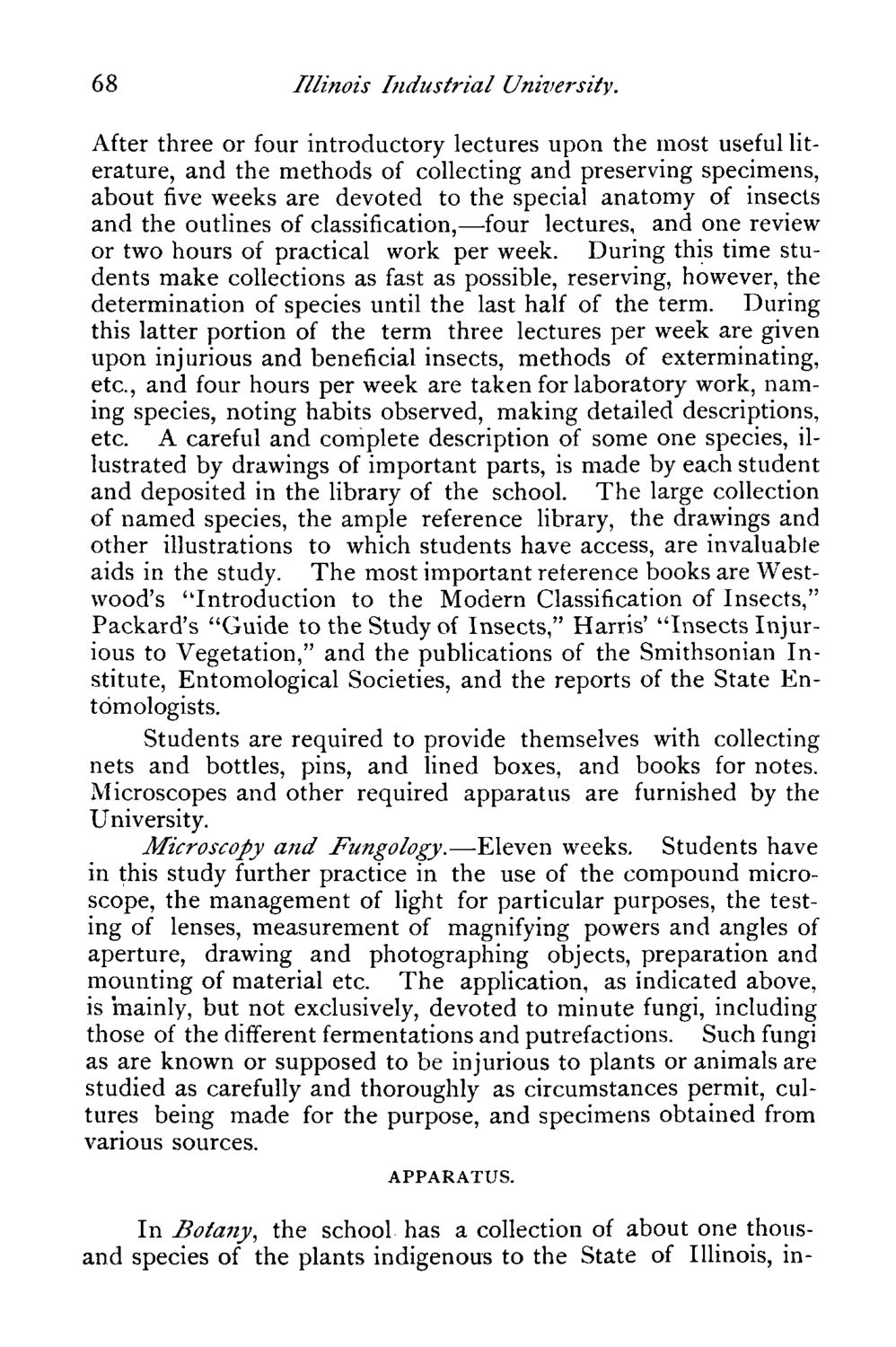| |
| |
Caption: Course Catalog - 1878-1879
This is a reduced-resolution page image for fast online browsing.

EXTRACTED TEXT FROM PAGE:
68 Illinois Industrial University. After three or four introductory lectures upon the most useful literature, and the methods of collecting and preserving specimens, about five weeks are devoted to the special anatomy of insects and the outlines of classification,—four lectures, and one review or two hours of practical work per week. During this time students make collections as fast as possible, reserving, however, the determination of species until the last half of the term. During this latter portion of the term three lectures per week are given upon injurious and beneficial insects, methods of exterminating, etc., and four hours per week are taken for laboratory work, naming species, noting habits observed, making detailed descriptions, etc. A careful and complete description of some one species, illustrated by drawings of important parts, is made by each student and deposited in the library of the school. The large collection of named species, the ample reference library, the drawings and other illustrations to which students have access, are invaluable aids in the study. The most important reference books are Westwood's "Introduction to the Modern Classification of Insects," Packard's "Guide to the Study of Insects," Harris' "Insects Injurious to Vegetation," and the publications of the Smithsonian Institute, Entomological Societies, and the reports of the State Entomologists. Students are required to provide themselves with collecting nets and bottles, pins, and lined boxes, and books for notes. Microscopes and other required apparatus are furnished by the University. Microscopy and Fungology.—Eleven weeks. Students have in this study further practice in the use of the compound microscope, the management of light for particular purposes, the testing of lenses, measurement of magnifying powers and angles of aperture, drawing and photographing objects, preparation and mounting of material etc. The application, as indicated above, is mainly, but not exclusively, devoted to minute fungi, including those of the different fermentations and putrefactions. Such fungi as are known or supposed to be injurious to plants or animals are studied as carefully and thoroughly as circumstances permit, cultures being made for the purpose, and specimens obtained from various sources. APPARATUS. In Bota7iy, the school has a collection of about one thousand species of the plants indigenous to the State of Illinois, in-
| |